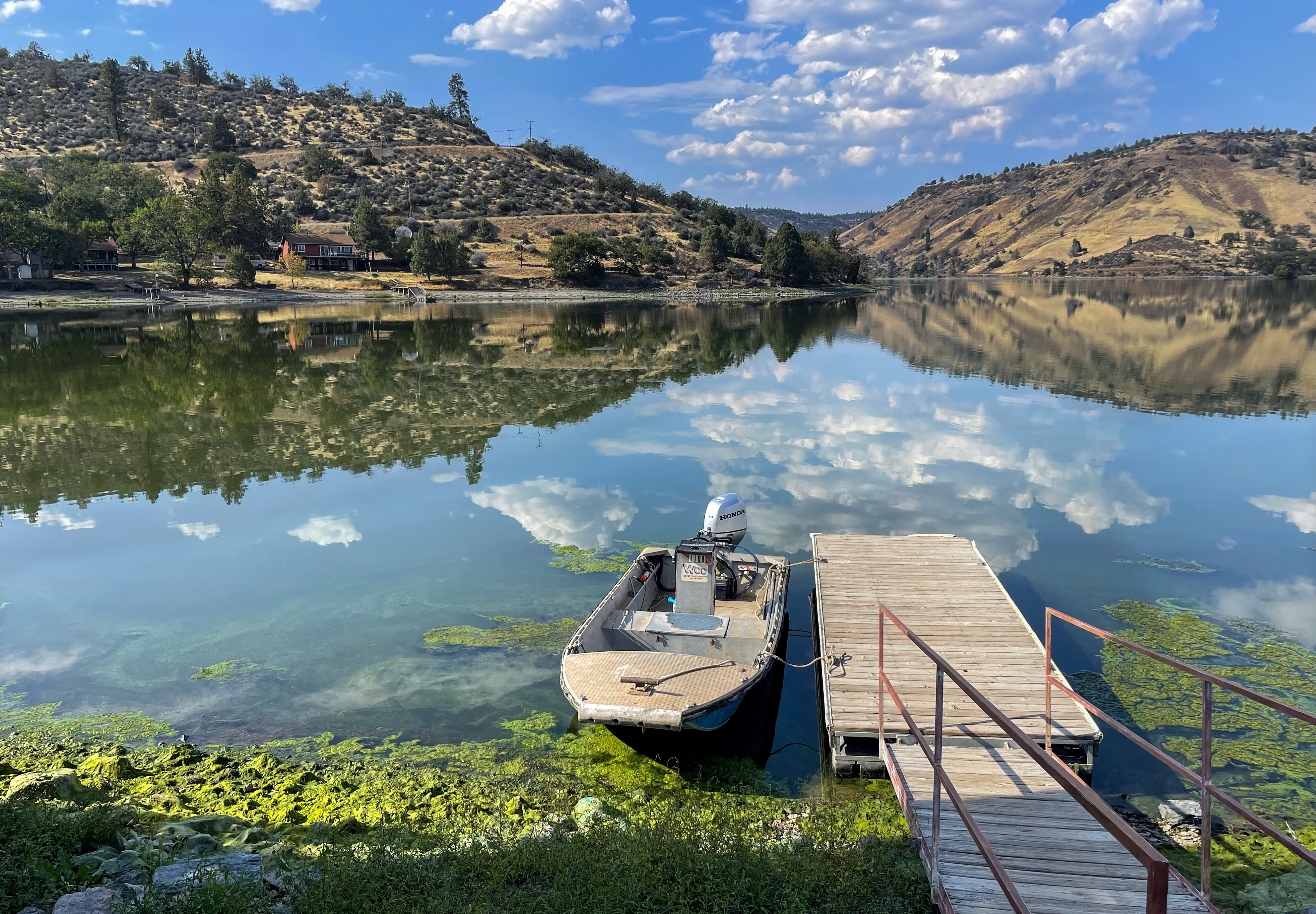
The reservoir above Copco 1 Dam, known as Copco Lake, will be drained before dam removal, exposing land that may be returned to the Shasta Indian Nation. Construction crews blasted a hole in the Copco 1 dam on Tuesday.
Cassandra Profita / OPB
Construction crews blasted a hole in the Copco No. 1 dam on Tuesday. It’s the final dam of four that will be removed from the hydroelectric reach of the Klamath River this year.
Video of the event shows a small explosion at the foot of the century-old, 120-foot-tall cement dam, followed by a plume of brown water being released downriver.
“We observed, within just a matter of a few seconds after the explosion, the initial push of water and sediment coming from the reservoir,” said Mark Bransom, the CEO of the Klamath River Renewal Corporation, the organization in charge of removing the four dams.
According to Bransom, the event went as planned, and they expect water to continue draining from Copco Lake, as well as the JC Boyle and Iron Gate reservoirs, for three weeks to a month.
In the meantime, the historic channel of the Klamath River and tributaries that feed into it are beginning to become visible. So far, no adverse impacts to fish have been witnessed, Bransom said. The release of decades of built-up sediment will increase the turbidity of the river and is expected to have immediate, short-term negative impacts on fish as oxygen levels drop.
But those impacts are widely expected to be overshadowed by long-term benefits for water quality and native fish, as hundreds of miles of habitat will be opened up that were previously cut off in the Upper Klamath Basin because of the dams.
“This condition will continue to be highly dynamic over the coming months and even the coming years. I think it’s important that we all take a long view of these changes and give the system some time to respond,” Bransom said.
The focus will next turn to restoration along the banks of the river once water has drained from the three reservoirs. Crews with contractor Resource Environmental Solutions will immediately begin planting native vegetation to prevent invasive species from spreading in the newly exposed riverbank.
Copco No. 2, the smallest of the four dams, was fully deconstructed in September. Deconstruction of the remaining three dams will start in the spring and is expected to last through 2024.


